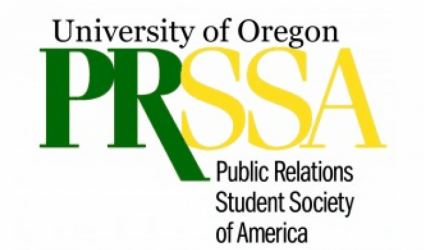By Erica Freeze
As I am about to graduate from the University of Oregon, my job search is on full-throttle. Every time I see the words “please attach a cover letter,” I start to question the purpose of one. What is the point of a cover letter? It turns out that they actually have a purpose and when you utilize them to their full potential they can get you past the application process and into the interview process.
The purpose of a cover letter is to help you stand out past your resume. Cover letters are the outlet to introduce yourself and demonstrate your interest in a company. In these letters, you draw attention to your resume and motivate the reader to interview you. Often this letter and your resume are the first contact you have with a prospective employer, and if written correctly can have a large impact whether they ask you to interview.
After writing many cover letters for my job applications and conducting some research, I have learned a great formula on how to land an interview. So how do you write an interesting cover letter? Read on:
Headers
Headers can vary for every cover letter. Here is a pro tip: usually larger companies look for a header for your cover letter while smaller companies or startups usually don’t. If you are applying to a large in-house company or agency, then a header will most likely be preferred. If you apply to an agency with a few employees, then a header will most likely not be needed.
A header should normally consist of the date you’re writing the letter, your name, address, phone number and email address. Then, skip a line on the page and address your letter to the person who posted the job and their title at the company. For example, if Jane Smith, an HR representative for Edelman posted the job, then you would say, “Dear Jane Smith, HR representative.”
Sometimes you cannot always find the name of the person who posted the job. If you have no idea who this person is, or who makes selections for interviews, I simply put, “Dear Edelman.”
Introduction Paragraph
A successful introduction paragraph will include a brief introduction as to who you are and why you are interested, and qualified in the position. I normally start with my name and my education. Following this, I provide a brand statement. One great thing about the SOJC is that it encourages you to have a brand statement made before portfolio reviews. This is great to include in a cover letter because it provides a brief background as to what you are interested in. An example of a brand statement may be, (and this is the one I created for myself) “I am an aspiring public relations professional with a passion for writing, strategic communication and creative thinking.”
Following this, I like to explain why I am qualified for the position and what I can do for the company. It is important to make your reasons relate back to the job posting in some way. Think of it this way, if you can use the same cover letter and simply swap out the name of the company, you aren’t being specific enough.
Body Paragraphs
Read over the job posting again, and the mission of the company as a whole. How can you help this company accomplish its goals? What experience do you have to succeed in the posted role? The next few paragraphs are for you to talk about your experiences that make you qualified. These can be internships, volunteer roles or even classwork if you do not have a lot of job experience.
I like to divide each paragraph up with the same structure. The first sentence or two should introduce your previous role and the skills you gained from the role. The following sentences should include scenarios where you utilized these skills, and how you best fulfilled the role. Lastly, provide results if you generated any. This is one of the most important things that companies look for. If you generate positive results, it proves that you worked hard in your role. An example of a result may be, “increased Facebook page likes by 50%.” It is as simple as that!
Conclusion Paragraph
Your conclusion should be about one to two sentences, and reiterate the following:
Your enthusiasm about the role.
A “thank you” to the company for taking the time to read.
Where the company can contact you with any further questions.
A mention of relevant documents or links attached (resume, website, etc.)
With this formula, you can hopefully attract the attention of employers and show them your potential! Good luck with the job search.


